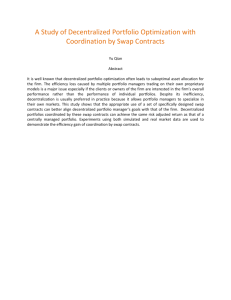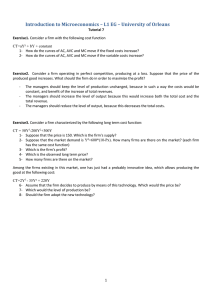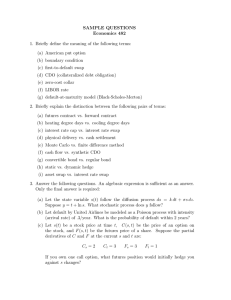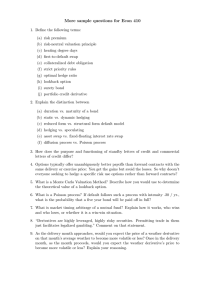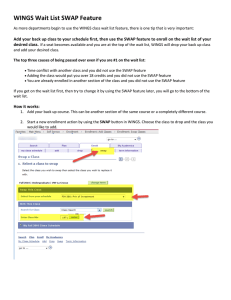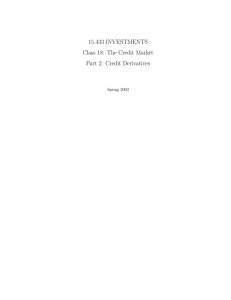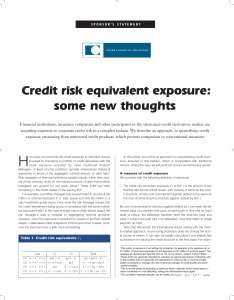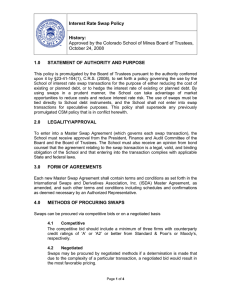Econ. 811 Summer 2006 Homework Set 4
advertisement
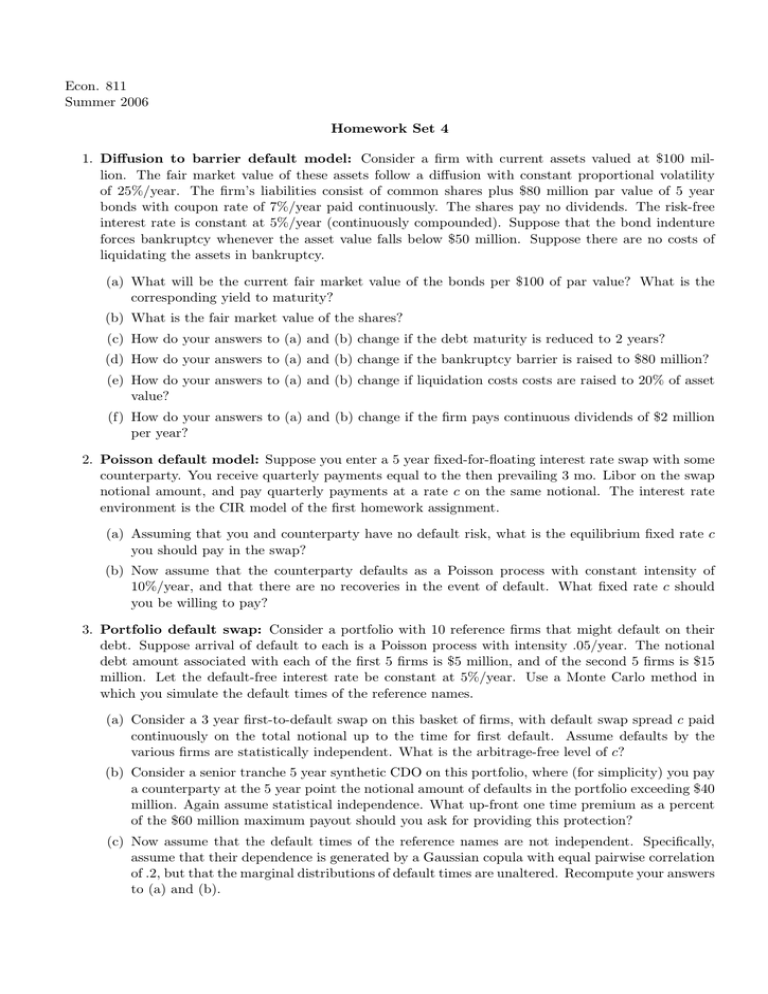
Econ. 811 Summer 2006 Homework Set 4 1. Diffusion to barrier default model: Consider a firm with current assets valued at $100 million. The fair market value of these assets follow a diffusion with constant proportional volatility of 25%/year. The firm’s liabilities consist of common shares plus $80 million par value of 5 year bonds with coupon rate of 7%/year paid continuously. The shares pay no dividends. The risk-free interest rate is constant at 5%/year (continuously compounded). Suppose that the bond indenture forces bankruptcy whenever the asset value falls below $50 million. Suppose there are no costs of liquidating the assets in bankruptcy. (a) What will be the current fair market value of the bonds per $100 of par value? What is the corresponding yield to maturity? (b) What is the fair market value of the shares? (c) How do your answers to (a) and (b) change if the debt maturity is reduced to 2 years? (d) How do your answers to (a) and (b) change if the bankruptcy barrier is raised to $80 million? (e) How do your answers to (a) and (b) change if liquidation costs costs are raised to 20% of asset value? (f) How do your answers to (a) and (b) change if the firm pays continuous dividends of $2 million per year? 2. Poisson default model: Suppose you enter a 5 year fixed-for-floating interest rate swap with some counterparty. You receive quarterly payments equal to the then prevailing 3 mo. Libor on the swap notional amount, and pay quarterly payments at a rate c on the same notional. The interest rate environment is the CIR model of the first homework assignment. (a) Assuming that you and counterparty have no default risk, what is the equilibrium fixed rate c you should pay in the swap? (b) Now assume that the counterparty defaults as a Poisson process with constant intensity of 10%/year, and that there are no recoveries in the event of default. What fixed rate c should you be willing to pay? 3. Portfolio default swap: Consider a portfolio with 10 reference firms that might default on their debt. Suppose arrival of default to each is a Poisson process with intensity .05/year. The notional debt amount associated with each of the first 5 firms is $5 million, and of the second 5 firms is $15 million. Let the default-free interest rate be constant at 5%/year. Use a Monte Carlo method in which you simulate the default times of the reference names. (a) Consider a 3 year first-to-default swap on this basket of firms, with default swap spread c paid continuously on the total notional up to the time for first default. Assume defaults by the various firms are statistically independent. What is the arbitrage-free level of c? (b) Consider a senior tranche 5 year synthetic CDO on this portfolio, where (for simplicity) you pay a counterparty at the 5 year point the notional amount of defaults in the portfolio exceeding $40 million. Again assume statistical independence. What up-front one time premium as a percent of the $60 million maximum payout should you ask for providing this protection? (c) Now assume that the default times of the reference names are not independent. Specifically, assume that their dependence is generated by a Gaussian copula with equal pairwise correlation of .2, but that the marginal distributions of default times are unaltered. Recompute your answers to (a) and (b).

